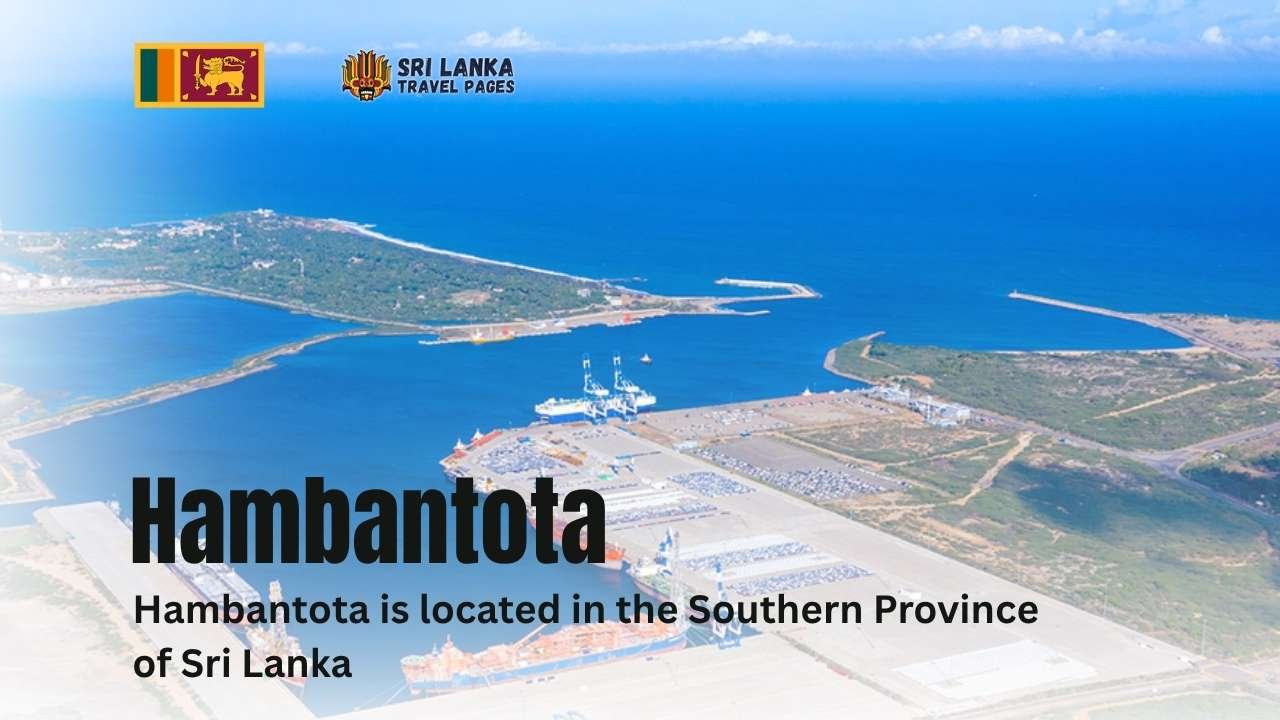
Hambantota is a vibrant district located in the southern coastal region of Sri Lanka, renowned for its unique blend of cultural heritage, natural beauty, and rapid modern development. This region is home to pristine beaches, thriving fishing communities, and diverse wildlife sanctuaries such as Yala National Park and Bundala National Park, attracting nature lovers and adventure seekers alike. Hambantota has also become a hub for agricultural activities, with vast paddy fields, salt pans, and coconut plantations shaping its rural charm. The district is strategically significant with the presence of the Hambantota International Port and Mattala Rajapaksa International Airport, boosting trade and tourism. Rich in history and tradition, it offers visitors an authentic Sri Lankan experience through its festivals, cuisine, and warm hospitality. Whether for business, leisure, or cultural exploration, Hambantota stands out as a destination that blends the old and new, offering a truly memorable experience in Sri Lanka’s deep south.
Total Population
671,037
GN Divisions
59
Hambantota: Coastal Heritage and Emerging City Life
A Gateway to Sri Lanka’s Deep South
Located along the sun-drenched southern coastline of Sri Lanka, Hambantota is a historic coastal district capital in the Southern Province, known for its golden beaches, fishing heritage, and rapid urban transformation. Positioned about 240 km southeast of Colombo, it serves as a strategic hub linking the deep south with the rest of the island. Bordering the vast Indian Ocean on one side and the arid, wildlife-rich landscapes inland, Hambantota blends traditional coastal charm with ambitious modern development projects.
Where Coastal Beauty Meets Tradition and Progress
Hambantota’s identity is shaped by its rich maritime history, salt production, and the strong cultural traditions of its people. Fishing remains a central livelihood, with vibrant fish markets showcasing the day’s catch. Inland, the economy is supported by paddy cultivation, coconut plantations, and dry-zone agriculture. The district is also famous for its salt pans, which have been harvested for generations.
Recent years have seen significant infrastructure development, including the Magampura Mahinda Rajapaksa Port, the Hambantota International Cricket Stadium, and upgraded road networks, positioning the area as a growing economic hub. Despite its modernisation, Hambantota retains its relaxed coastal pace, colourful cultural festivals, and close-knit community spirit.
Many local divisions, such as Magama, Kachcheriyagama, Sandungama, and Weerahela, retain their distinctive local identities while contributing to the district’s diverse heritage. Temple peraheras, fishermen’s festivals, and rural agricultural fairs are still celebrated with enthusiasm.
Nature, Heritage, and Wildlife
Surrounded by unique dry-zone landscapes, Hambantota offers easy access to Bundala National Park, a UNESCO Biosphere Reserve famed for its birdlife and wetlands. The nearby Yala National Park is home to elephants, leopards, and a wealth of biodiversity. Coastal stretches such as Mahamodara and Ambalantota showcase peaceful fishing hamlets and untouched beaches.
The arid yet fertile land supports hardy crops such as sesame, maize, and millet. The coastal breeze, mangrove-lined lagoons, and stretches of palu and kohomba trees give Hambantota its distinctive natural character.
Community, Education & Local Governance
Hambantota’s community thrives on strong family ties, mutual support, and a respect for tradition. Annual temple events, coastal rituals, and village sports keep social bonds alive. The district is home to a variety of schools ranging from village primary schools to well-established secondary institutions such as Hambantota Maha Vidyalaya.
Healthcare facilities include the Hambantota General Hospital and a network of rural health centres, ensuring residents have access to essential medical services. The Hambantota Divisional Secretariat administers public services, welfare programs, agricultural support, and development initiatives to improve livelihoods.
Reaching Hambantota – Access and Transport
🚖 By Taxi/Private Vehicle
From Colombo, Hambantota can be reached in around 4.5–5 hours via the Southern Expressway (E01) and the Hambantota extension (E06).
🚌 By Bus
Frequent intercity buses connect Hambantota to Colombo, Galle, Matara, Tangalle, and Kataragama.
✈ By Air
Mattala Rajapaksa International Airport, located just 30 minutes away, offers domestic and limited international flights.
🚆 By Train
There is no direct train service to Hambantota; the nearest stations are in Matara and Beliatta, from where buses or taxis connect to the town.
Whether you are exploring wildlife sanctuaries, enjoying the tranquil coastline, or witnessing the transformation of a once-sleepy fishing town into a vibrant economic centre, Hambantota offers a unique mix of tradition and progress. In this place, the sea breeze meets the rhythm of rural life.
| Service | Contact Number | Additional Info |
|---|---|---|
| 🚓 Hambantota Police Station | +94 47 222 2261 | Local law enforcement office responsible for public safety, traffic regulation, crime prevention, and emergency response within the Hambantota area. |
| 🏥 Hambantota District General Hospital | +94 47 222 2264 | Major government hospital offering outpatient, inpatient, surgical, maternity, pediatric, and emergency care for the Hambantota district and surrounding communities. |
| 🏛️ Hambantota Divisional Secretariat | +94 47 222 2235 | Central administrative office overseeing civil registration, GN division management, agricultural assistance, infrastructure development, and public welfare programs. |
